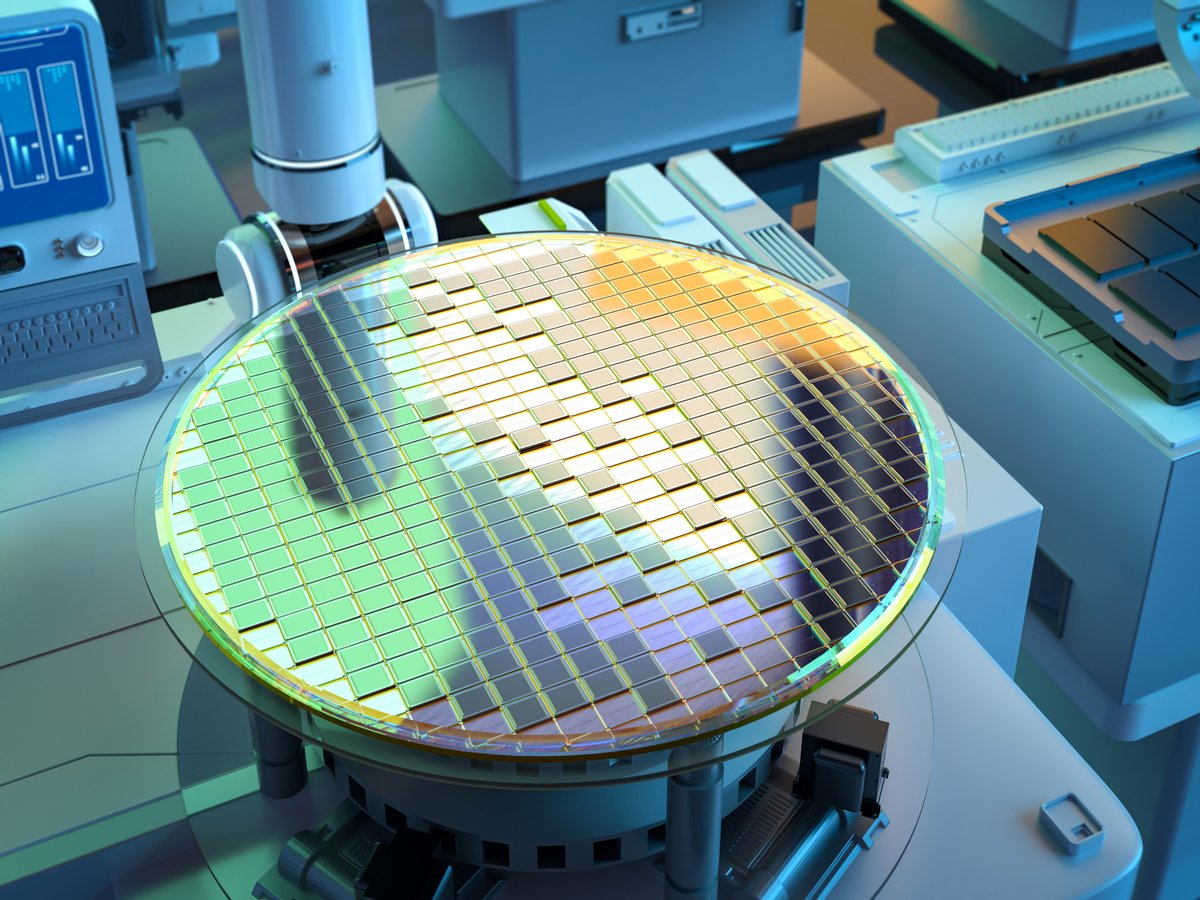Semiconductor stocks have delivered strong performance in 2025 with the enormous demand for chips to power artificial intelligence (AI) workloads. This is evident from the 38% gains in the PHLX Semiconductor Sector index so far this year.
Nvidia is the world's largest company by market cap and the leading player in the AI chip market by quite some distance. The stock's gains this year have been almost in line with the PHLX Semiconductor Sector index, of which it is a part. Nvidia stock could deliver more gains in 2026, though there is a chance that the expensive valuation may weigh on the stock.
But there are alternatives that investors can consider to capitalize on the semiconductor industry's growth next year. Let's look at two such names and why they have the potential to outperform Nvidia in 2026 and beyond.

Image source: ASML.
1. ASML
ASML (ASML +0.35%) is a crucial cog in the semiconductor sector because the Dutch company makes the machines used to fabricate the advanced chips that Nvidia designs for AI workloads in data centers, and other applications such as computers and smartphones.
ASML has a monopoly-like position in the extreme ultraviolet (EUV) lithography market. These EUV machines are used by foundries and chipmakers for printing advanced chips based on small process nodes. Chips manufactured using small process nodes can pack more transistors into a smaller area, allowing for faster movement of electrons that helps boost computing power.
Also, the electrons need to travel a smaller distance considering the tighter real estate on advanced chips, which is why they generate less heat and are more power efficient. These advanced chips are now in hot demand for running AI workloads that need strong computing performance along with high power efficiency.

NASDAQ: ASML
Key Data Points
So the demand for ASML's lithography systems is now increasing at an impressive pace. The company received 5.4 billion euros ($6.3 billion) of new bookings in the third quarter of 2025, more than double the 2.6 billion euros ($3 billion) of bookings it registered in the same quarter last year, thanks to the growing need for advanced chipmaking equipment.
Intel now focuses on advanced process nodes measuring 1.8 nanometers (nm) to 1.4 nm, and it has reportedly lined up several customers for them.
The industry association SEMI projects advanced chipmaking equipment will command over $50 billion in annual capital spending in 2028, versus $26 billion last year. So ASML could have much stronger earnings growth than the 5% increase that analysts project for 2026.
For comparison, ASML's earnings are expected to jump by 28% this year. Its improving backlog and the upbeat prospects of the semiconductor equipment industry could ensure a repeat performance next year. That could set this semiconductor stock up for more upside in 2026 and in the long run.
2. Taiwan Semiconductor Manufacturing
Popularly known as TSMC, Taiwan Semiconductor Manufacturing (TSM +0.70%) is the world's largest foundry. As such, it is an important player in the global semiconductor ecosystem.
The company fabricates chips for both fabless chipmakers (companies like Nvidia that design chips but don't manufacture them) and integrated device manufacturers (IDMs) using the advanced machines that it purchases from the likes of ASML, and it plans to allocate 70% of its $41 billion capital expenditures for 2025 toward advanced process technologies.

NYSE: TSM
Key Data Points
So, while ASML provides the basic building block that's needed to manufacture advanced chips, TSMC's plants put those machines into action, and it has established a strong lead over other foundries.
The tech researcher Counterpoint says that TSMC controlled 38% of the Foundry 2.0 market (which consists of chip packaging and testing along with traditional chip manufacturing) in the second quarter of 2025, up by 7 percentage points from the year-ago period. In fact, TSMC accounted for 75% of the incremental year-over-year growth in the Foundry 2.0 market's revenue in the second quarter. This dominant performance can be attributed to the high demand for the company's 3nm, 4nm, and 5nm advanced chip processing nodes.
These chips are being used by customers such as Apple, Qualcomm, AMD, Nvidia, Broadcom, and others to manufacture not just AI data center chips, but also consumer-facing items such as smartphones and PCs as well.
TSMC's share of the foundry market is growing faster than expected. Market research firm IDC forecasted the company would end 2025 with a 37% share of Foundry 2.0. However, it reached that mark ahead of schedule. And its share of this space should increase as it is set to launch even more advanced process nodes in 2026.
Its stature in the foundry market gives it strong pricing power, and the company is expected to increase the prices of its advanced wafers by 5% to 10% next year. TSMC could see a significant expansion in its shipment volumes as well, considering that major cloud computing and AI companies sit on huge backlogs that will encourage them to build more data centers and deploy more AI chips.
All this indicates that TSMC can sustain its healthy bottom-line growth into 2026. Analysts expect a 47% increase in its revenue this year, though they expect it to slow down to 20% in 2026.
But that's unlikely since TSMC just raised its 2025 revenue guidance to the mid-30% range from the earlier expectation of 30%, and the developments in the semiconductor space suggest that it can repeat its outstanding performance next year as well.


